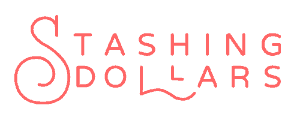Budget…just the sound of the word makes me feel uneasy. It gives me a feeling of restriction and no fun, but really it is not that at all. A simple budget is one small part of your journey to financial freedom.
It is what will help you payoff your debt as well as ensure you have the money to put food on the table, send your kids to college and possibly enjoy the vacation of a lifetime. If you don’t budget, you want to make that one of your goals for the upcoming month.
This post may contain affiliate links. Please read our disclosure policies for more details.
What is a Budget?
According to Wikipedia, a personal budget or home budget is a finance plan that allocates future personal income towards expenses, savings and debt repayment. So, simply put, a budget is just a financial plan. I like plans. They give a feeling of being organized and reduce the feeling of overwhelm and stress. And if you look at the big picture, budgets can be very flexible and tailored to fit your lifestyle as well as your financial goals.
Most people use budgets for their monthly spending, but a budget can also be used for niche activities, such as; entertainment or a home renovation. I like to go to concerts. So, I have a concert budget. I probably should also have a cross stitch and jewelry making budget, but I am not doing much of either right now.
How to Make a Personal Budget
Think about what you spend money on and this will help you determine what you should be including in your household budget. Start by listing your fixed expenses (rent, loan payments, utilities, etc). Then list the other things you spend money on each month. You can track your spending to get an idea where your money is being spent or you can do what I do. Bank statements also give a detailed spending record, if you don’t use much cash. If you withdraw a lot of cash from the bank, you will have to track it another way. Here is a list of budget categories that will get you started:
Emergency Fund
Savings
Housing
Utilities
Health Care
Consumer Debt
Food and Groceries
Personal Care
Entertainment
What is a 50 30 20 Budget?
The 50 30 20 method really is very simple to use. You categorize your expenses as “needs”, “wants” and “savings”. It is that easy. Take the monthly expenses and designate them either as a “want” or a “need.” Your needs should total no more than 50% of your income. The wants category should be less than 30% of your total income. If your are wants and needs total 80% of your income or less, you will be left with the 20% that is designated for savings.
If you have 20% of your income available for savings, you are well on your way to living within your budget using the 50 30 20 method. Nothing will happen if your needs are 40% of your income and your wants are 40%. With that said, you may want to reevaluate what you are spending your money on if your wants and needs don’t fall in line with the 50 30 20
percentages.
If your needs are higher than 50%, you could be headed down a path that may make it difficult to pay all of your bills. Having a wants category that is higher than 30%, could have you headed towards accumulating consumer debt. The good thing about having “wants” over 30% is they are only wants and you can slash where necessary to keep your spending within the budget guidelines.
The big benefit to using the 50 30 20 method is its ease and flexibility. You simply divide your income in half and that is what you should be spending on necessities. The other half is for your wants and savings. The ultimate goal in creating a budget is to be able to have control over the money spent as well as plan for large purchases.
If you have never done a budget, you can put together a 50 30 20 plan in less than 15 minutes. It does not have to be perfect. Budgets should be flexible enough to change and accommodate life events. Many people aim for 30% – 50% in savings. You can get these savings targets more quickly by cutting back on other expenses. You want to increase savings even more? Find a way to make extra money.
Having a “side hustle” has become quite popular. The era of working for a large company for thirty years and then collecting a pension is long gone. Increasingly, people are taking actions to be more incontrol of their own money and that means saving more and finding ways to build their savings. There are many ways you can increase your income by $500 – $1,000 each month.
Budgeting for Beginners
I know that the word “budget” can sound intimidating, but it does not have to be. The 50 30 20 method of budgeting is something can be done in just a few minutes. It is this simple:
List your expenses
Mark each expense as a “want” or “need”
Total your “wants” and “needs”
Calculate 50%, 30% and 20% of your income
Check to see if your expenses categories fall within the suggested guidelines
Adjust your expenses as necessary
Monitor and adjust your budget periodically
Managing money does not have to be difficult and the 50 30 20 method of budgeting can put you in control of your money with a planning tool that is flexible. If you do not have a plan for budgeting, the 50 30 20 method is a quick and easy way to change that.
20 Things We Stopped Buying to Save Money
10 Money Saving Tips That Can Save You Hundreds
8 Creative Ways to Save Money for College



